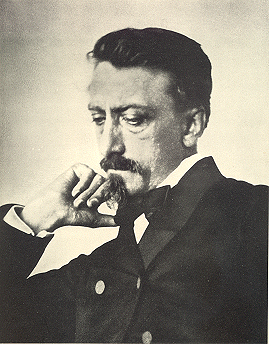
Eduard Douwes Dekker, better known by his pen name Multatuli, was a Dutch writer best known for his satirical novel Max Havelaar (1860), which denounced the abuses of colonialism in the Dutch East Indies. He is considered one of the Netherlands' greatest authors.

Louis Marie-Anne Couperus was a Dutch novelist and poet. His oeuvre contains a wide variety of genres: lyric poetry, psychological and historical novels, novellas, short stories, fairy tales, feuilletons and sketches. Couperus is considered to be one of the foremost figures in Dutch literature. In 1923, he was awarded the Tollensprijs.

Ot en Sien is a Dutch children's book series, written by Hindericus Scheepstra, a teacher in Drenthe, the Netherlands. It centers around two little children, a boy named Ot and a girl named Sien.
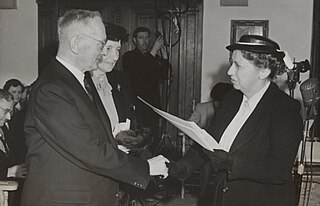
Ferdinand Bordewijk was a Dutch author. His style, which is terse and symbolic, is considered to belong to New Objectivity and magic realism. He was awarded the P. C. Hooft Award in 1953 and the Constantijn Huygens Prize in 1957. He wrote novels and short stories; of his novels, his 1938 Character is canonical in the Netherlands, and was the basis for a 1997 film of the same name.
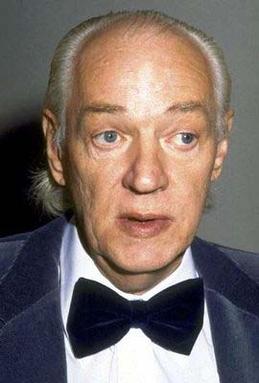
Lambertus Jacobus Johannes "Bertus" Aafjes was a Dutch poet noteworthy for his poems about resistance to German occupation during World War II.
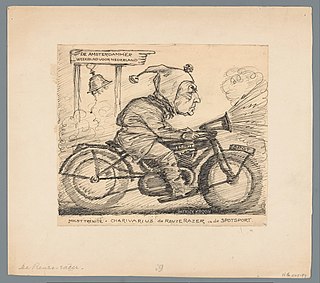
Gerard Nolst Trenité was a Dutch observer of English.
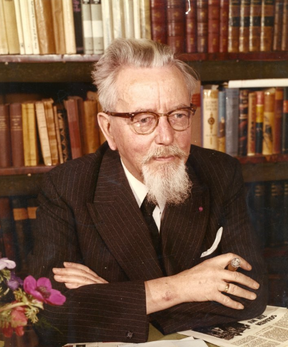
Andreas Ernestus Josephus Claes was a Belgian author. He is best known for his regional novels, including De Witte ("Whitey"), which was the source material for the first Flemish movie: De Witte (1920). In 1980 it was remade as De Witte van Sichem by Robbe De Hert.
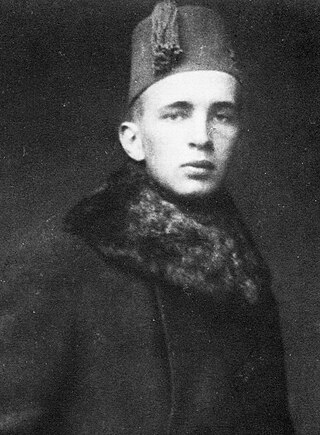
Johan Johannes Fabricius, who published in English as Johan Wigmore Fabricius, was a Dutch writer, journalist and adventurer.

Ernst Gideon Jansz is one of the founding members and frontmen of Doe Maar. Doe Maar is a Dutch 1980s ska/reggae band, and is considered one of the most successful bands in Dutch pop history.
Tjalie Robinson is the main alias of the Indo (Eurasian) intellectual and writer Jan Boon also known as Vincent Mahieu. His father Cornelis Boon, a Royal Netherlands East Indies Army (KNIL) sergeant, was Dutch and his Indo-European mother Fela Robinson was part Scottish and Javanese.

Totok is an Indonesian term of Javanese origin, used in Indonesia to refer to recent migrants of Arab, Chinese or European origins. In the eighteenth and nineteenth centuries it was popularised among colonists in Batavia, who initially coined the term to describe the foreign born and new immigrants of "pure blood" – as opposed to people of mixed indigenous and foreign descent, such as the Peranakan Arabs, Chinese or Europeans.

Gerardus Antonius "Gerard" Cox is a Dutch singer, cabaret artist, actor, and director. For fifteen years, he played the lead character of the Dutch sitcom Toen Was Geluk Heel Gewoon.
Wilhelmus Henricus Maria van den Hout was a Dutch writer and publicist, best known as the writer of the Bob Evers series of children's books.
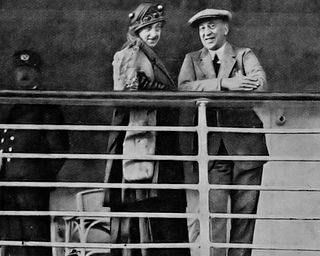
Elisabeth Wilhelmina Johanna (Betty) Couperus-Baud, was a Dutch translator. She was the wife of the Dutch writer Louis Couperus (1863–1923).

Marie "Rie" Cramer was a Dutch writer and prolific illustrator of children's literature whose style is considered iconic for the interwar period. For many years, she was one of the two main illustrators for a leading Dutch youth magazine, Zonneschijn (Sunshine). She also wrote plays under the pseudonym Marc Holman. Some of her work was banned during World War II because it attacked National Socialism, and she wrote for a leading underground newspaper during the war.
The Achtste Klasse (1996–2001) was a Dutch association football league for men. It covered only a part of North and South Holland. The champion and the runner-up of the Achtste Klasse gained the right to promote to the Zevende Klasse. It was up to the club to use this right or not.

Frans Jozef Peter van den Branden was a Belgian playwright, art historian, civil servant, educator and archivist. He wrote in the Dutch language. He is now known mainly for his art historical works, which mainly dealt with the history of the Antwerp school of artists and Antwerp poets and dramatists linked to the local chambers of rhetoric. He also co-authored the Biographisch woordenboek der Noord- en Zuidnederlandsche letterkunde with Johannes Godefridus Frederiks, a biographical dictionary of writers from the Netherlands and Belgium and their predecessor states.

VV Noordscheschut is a Dutch association football club from Noordscheschut, Netherlands. Its home ground is Sportpark De Meulewieke. The club colors are blue-white.

Annie Salomons (1885–1980) was a Dutch writer, poet and translator.
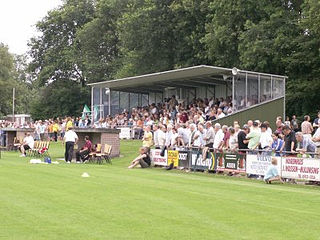
Voetbalvereniging Vlugheid Kracht Westerbork (VKW) is a football club based in Westerbork, Drenthe, Netherlands. It was founded on 8 August 1929. In 2022, they reached promotion to the Vierde Divisie. They suffered relegation back to the Eerste Klasse after their sole season in the Vierde Divisie.

















